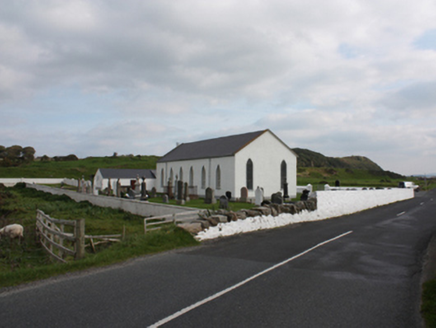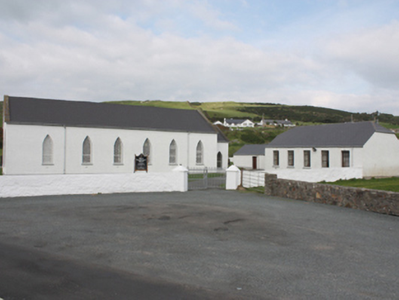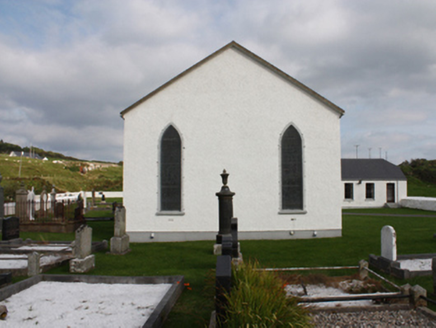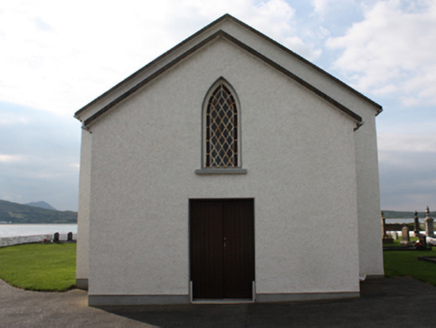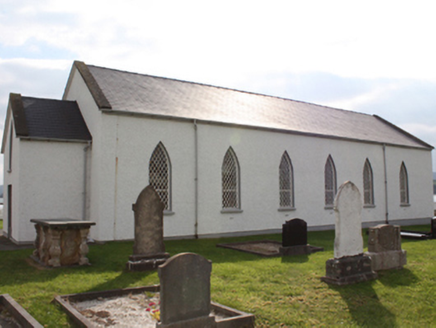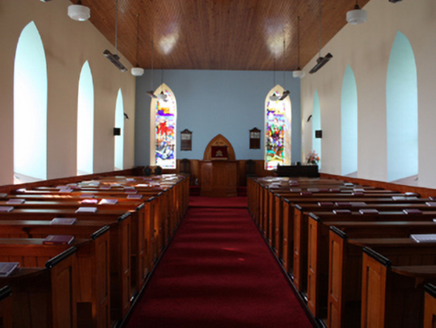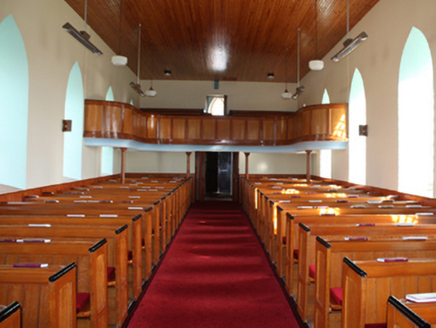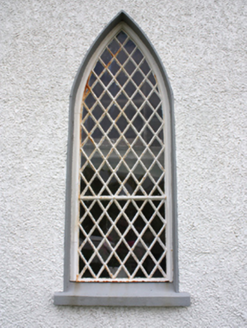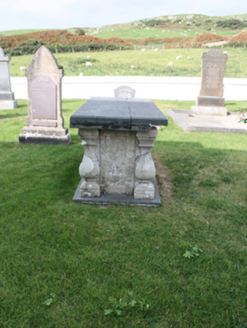Survey Data
Reg No
40900408
Rating
Regional
Categories of Special Interest
Architectural, Social
Previous Name
Lagg Presbyterian Meeting House
Original Use
Church/chapel
In Use As
Church/chapel
Date
1770 - 1800
Coordinates
243703, 451665
Date Recorded
25/09/2008
Date Updated
--/--/--
Description
Freestanding six-bay Presbyterian church, built c. 1780, extended and porch added to east 1868. Pitched artificial slate roof with rendered gable coping and replacement rainwater goods. Roughcast rendered walls with smooth rendered plinth course. Lancet-arch-headed window openings with diamond-shaped glass in cast-iron lattice-work. Square-headed door opening with double leaf battened timber doors. Internally timber pews with central aisle, horseshoe-shaped gallery to rear, with timber panelled balustrade and cast-iron column supports; timber wainscoting to sill level and central carved wooden pulpit. Set within grounds with detached five-bay single-storey Sunday School comprising pitched artificial slate roof and roughcast rendered walls. Site bounded by whitewashed rendered walls with sloping coping and double leaf wrought-iron gates mounted on diamond-shaped piers with pyramidal coping. Gravemarkers to north and west.
Appraisal
A simple hall-type Presbyterian meeting house that originally dates to the eighteenth century. This plain building is almost vernacular in character, while the pointed-arched openings lend it the merest of a Gothic Revival character. The simple form of this building is indicative of the relative lark of resources available to the Presbyterian community at the time of construction, and the restrictions that applied to the non-conformist church buildings under the Penal Laws (from 1695). Although adapted through time and extended to suit changing requirements of the community, it retains much of its early character. The loss of some of its salient fabric fails to detract substantially from its visual appeal and integrity. The retention of the cast-iron lattice glazing to the window openings is of note. It is of social importance to the local community as an early example of its type, and it provides an interesting historical insight into the diverse religious make-up of this part of rural Donegal at the time of construction. The quality of the site is enhanced by the gravemarkers to the gravemarkers and Sunday school which provide it context. The interior and grounds are well-maintained and the views of Trawbreaga Bay add greatly to the overall ambiance of the site. The first minister of Malin was appointed in 1717 but the present church is more than likely at later construction. It is interesting to note that there are shutters to the front door to prevent water ingress during times of high tides\storms. It was described by Lewis in 1837 as 'a large Presbyterian meeting-house connected with the Synod of Ulster, of the third class'. It was extended in 1864, when 16ft were added to its length, a porch was added to the east gable, while the gallery to the interior was also added at this time. This is the most northerly Presbyterian meeting house in Ireland, and is the second most northerly place of worship in Ireland where services are still held. This building and associated structures is an important element of the built heritage and social history of the local area.
